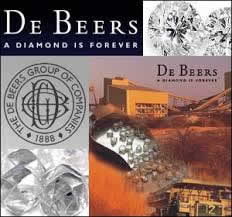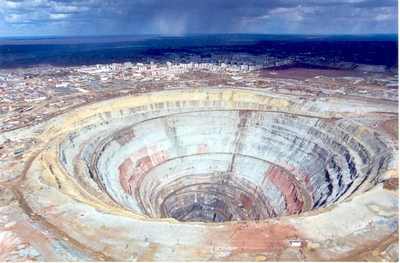The current year, not the best for the global diamond industry, witnessed a whole series of events and phenomena arousing discussions in the trade. Rough&Polished asked Maxim Shkadov, President of the International Diamond Manufacturers Association (IDMA) and CEO of Kristall Production Corporation, the largest diamond manufacturer in Russia and Europe, for comments. In his interview, he shared his thoughts on the recent IPO carried out by ALROSA, the reasons leading to a slowdown in the global diamond market and possible ways to overcome it.
ALROSA held an IPO, which stock market analysts evaluate as generally successful. In what aspects is it important from the point of view of an industry player?
I believe that the IPO carried out by ALROSA is a positive factor for the industry. This is another step towards transparency and therefore to higher confidence in the company and in the industry as a whole on the part of investors and consumers of diamond goods. Now the state of the diamond market and forecasts for its development will have a direct impact on the capitalization of ALROSA, while any positive development of this market is impossible without a proper balance between the interests of the company and those of its major customers, one of which is Kristall. ALROSA is expected to get more interested in overcoming crisis phenomena in the market and given its capabilities, it is encouraging.
What are the main reasons of the current crisis manifestations?
The crisis in our industry is systemic in nature, and its main cause is the lack of a regulator, the role of which was previously performed by De Beers. Today, the two rough producing giants, ALROSA and De Beers, are forced to solve short-term problems: ALROSA is demonstrating its investment attractiveness in connection with the IPO, while De Beers is seeking to increase the revenue of its new major shareholder trying to recover what was paid to the Oppenheimer family. So far, the both companies see higher rough prices to be key to solving these tasks, which leads to actual elimination of margins for diamond cutting factories and virtually makes diamond dealers trade in bank loans, not in diamonds, thus just aggravating the already unprecedented debt load in the industry reaching $ 18 billion, of which India accounts for approximately $ 15 billion, despite the fact that the Indian state-owned company providing insurance for these loans has $ 2 billion at its disposal. It can be argued that every diamond now circulating in the market has been credited twice. This is a very dangerous situation, and it is obvious to everyone: Antwerp banks are already busy reducing credit lines.

The absence of a market regulator made rough supply unmanageable where rough entered the global “diamond pipeline,” while the distribution system remained essentially a cartel type: about 150 immediate customers and about 5,000 in the “second tier.” With this arrangement, the desire of mining companies to get the highest possible price for their goods will inevitably lead to lost liquidity in the downstream links of the diamond chain and ultimately to overstocking in the polished market. Today, even one-caraters don’t find any buyers and online stores alone offer over $ 6 billion worth of polished diamonds. Sightholders of ALROSA and De Beers have to credit their customers in the secondary market. The Indians said they would cut production by 50% in the fourth quarter, that’s a lot. The market is coming to a halt.
In which direction should we look for a way out of this situation?
The only radical solution is to return to a regulated market, to create artificial scarcity of diamonds. In the new environment it can be achieved by an intergovernmental agreement between Russia, Botswana, Angola, Namibia and South Africa creating a structure controlling about 90% of global rough diamond production. Any other option would be a palliative preventing to eliminate the risk of resurgent crises in the diamond industry. I should note that this view is gradually gaining understanding among Russian authorities.
But De Beers and the U.S. are certain to be unhappy about it…
The rough diamond market in the U.S. is a small player with a turnover of no more than $ 100 million. And for those whose business involves polished diamonds market regulation is definitely expedient. De Beers is now in a rather contradictory situation – some of their top managers are mainly concerned with increasing the company’s short-term earning power to meet the interests of Anglo American, while others at the same time understand the historical specifics of our market and are aware of the need for its regulation. In addition, the transfer of the trading platform from London to Gaborone could significantly affect the personnel capacity of De Beers, and right now it is difficult to say, which point of view will determine the future. In any case, there is a need for an inlet valve in the diamond pipeline, or a “diamond OPEC,” since this is the only way for healthy development of the industry.
The International Diamond Manufacturers Association (IDMA) and the World Diamond Mark Foundation (WDMF) signed a memorandum of understanding at the last presidential meeting in Antwerp. Could you tell us what kind of steps will be taken within this cooperation and what goals are set within its framework?
IDMA will promote among its members the idea set forth by WDMF to provide financing for generic diamond marketing. The idea to collect money from all market participants to address this pressing task is quite sensible. The problem is that now mining companies took the e
e part in the World Diamond Mark Foundation so far. There are more than enough reasons not to – from competitive challenges to legislative hurdles. For example, under the Russian legislation it is difficult to attribute advertising expenses for goods which are not produced by the company to its production costs. On the positive side it should be noted that WDMF has a chance to replenish its personnel first of all from the staff of De Beers, who have problems with the move to Gaborone. This could be a major step towards creating a team of highly professional marketers.

In your opinion, in what way ALROSA’s listing will influence the ongoing efforts to create exchange traded index funds (ETF) based on diamonds?
Attempts to create investment instruments like diamond derivatives were made more than once, but they inevitably failed. Diamonds are not a commodity, they have too numerous and too diverse characteristics determining their value. Once the shares of ALROSA entered the stock market, investors got a chance to have an attractive tool associated with the diamond market and the need in designing sophisticated derivatives turns excessive. But while considering these shares as an investment, it is extremely important to understand the specific characteristics of the diamond market, not limiting one’s analysis to formal indicators in the company’s statements. At this stage, these figures look impressive, but largely because mining companies are pumping out added value, leaving all the other players on a starvation diet, which is causing the current crisis and will eventually deliver a painful blow to the miners themselves. To overcome this negative situation, there is a need in a range of measures – from the creation of a diamond OPEC to generic marketing programs, and it should be realized not only by diamond industry participants, but also by investors who have decided to invest in mining shares. Therefore, any movement in the industry in that direction should be evaluated positively by investors as stabilizing the market, making it predictable and reducing risks. I am often criticized for being emotional in my comments regarding our business and processes taking place in it. But diamond sales are motivated not by the bone-dry statistics of numbers, but by the emotional background, which is generating these numbers. And the global error of mining companies is their obsession with interim results and being blind to prospects possible by way of creating a positive emotional background. I think that publicity will help them to see this.
One of the major risks for the industry is the developing production of synthetic diamonds. What is your outlook on this threat?
Of course, the threat is real. As soon as there will be a serious player ready to invest in the marketing of this product (especially in the absence of generic marketing for natural diamonds), we may be running the risk to see a situation similar to that which happened in its time in the pearl market. How soon will this happen? Maybe in fifteen years or maybe much earlier. This niche is free. And to console yourself that buyers will never barter away natural gems for synthetic stones is futile. Buyers are different, some need top clarity diamonds, some are satisfied with I2 stones and some want synthetics, if properly offered. Indeed, people do buy Swarovski Crystals – glass at the price of diamonds. This is a matter of branding only.
Currently, we can see significant investments in the production of synthetic diamonds, mainly in China. And then, these will be inevitably followed by investments into their marketing. And a slice of the market will be bitten off, and first of all it will be taken away from mining companies. Unfortunately, ALROSA in contrast to De Beers is completely ignoring the problem, but time dictates the need to engage in monitoring synthetics market and determine where and how fast production techniques are moving, as well as where and how there may come a breakthrough in marketing…
The industry needs to work together to take decisions about the legal mechanism and ways to employ it to separate the flows of natural and synthetic stones, possibly as an analogue of the Kimberley Certificate. Cases of mixing synthetics to natural diamonds are becoming more frequent, and the industry has no right to test consumer confidence. This is a serious challenge, and the response should be appropriate.

